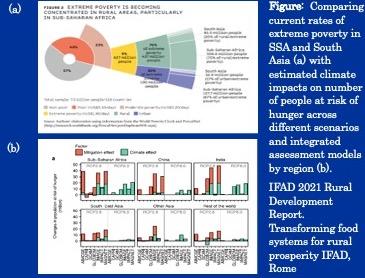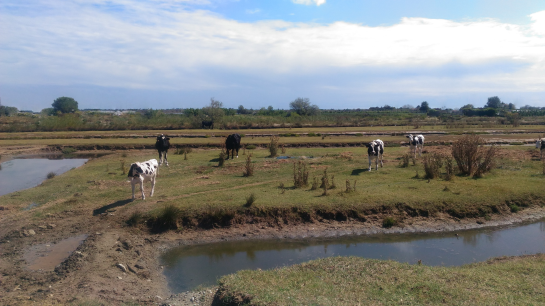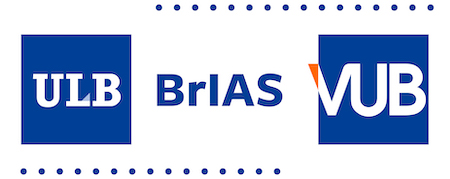How does climate change affect agricultural transformation for poverty reduction?
Historically, massive reductions in poverty have been associated with (a) the transformation of the agricultural sector, which involves increasesin agricultural output while the share of the sector in overall employment and the economy decreases1. The impact of climate change on agricultural productivity and the critical role of the agriculture, forestry and other land use (AFOLU) sector in attaining mitigation goals challenge the potential for agricultural transformation. Since most of the world’s poor people live in rural area and extreme poverty is concentrated in the rural areas of sub- (b) Saharan Africa (SSA) followed by South Asia, understanding the potential of achieving agricultural transformation in these areas is essential to achieving global goals of eradicating poverty. The talk will include a brief overview of key features of past experience with agricultural transformation, the challenges that adapting to and mitigating climate change pose for agricultural transformation particularly in SSA and South Asia and conclude with a discussion of implications for strategies for eradicating poverty.
1. Christiaensen, Luc, and Will Martin. "Agriculture, structural transformation and poverty reduction: Eight new insights." World Development 109 (2018): 413-416.

Animals in the Roman-early medieval transition. From Britannia to England, from Venetia to the Venetian Lagoon
Zooarchaeology – the study of animal remains from archaeological sites – informs on all aspects of past human-animal relationships, from food production to ritual practices. Such information allow to reconstruct socio-economic and cultural dynamics at different levels, from individual settlements to continents. This talk will show how targeted zooarchaeological analyses can be used to shed light on the Late Roman-early medieval transition in western Europe. The first part of the talk will focus on Britain. In Roman times, agriculture and animal husbandry were influenced by the need to produce a surplus, which fed increasing communities of net-consumers (urban dwellers and army units) and fueled the taxation cycle. Animal use focussed on cattle, used in agricultural works and meat production. In Early Anglo-Saxon England, the lack of centralised control allowed to re-design animal husbandry based on different needs. Later political developments will re-impose a functional exploitation of the countryside within a hierarchical settlement structure.
In the second part of the talk the project InTer AquAS will be presented. The project aims to integrate zooarchaeological evidence from domestic and aquatic animal remains in order to reconstruct socio-economic processes between Late Antiquity and the Early Middle Ages along the north-western Adriatic coast. The state-of-the-art, project objectives, materials and methodological approaches will be introduced.

